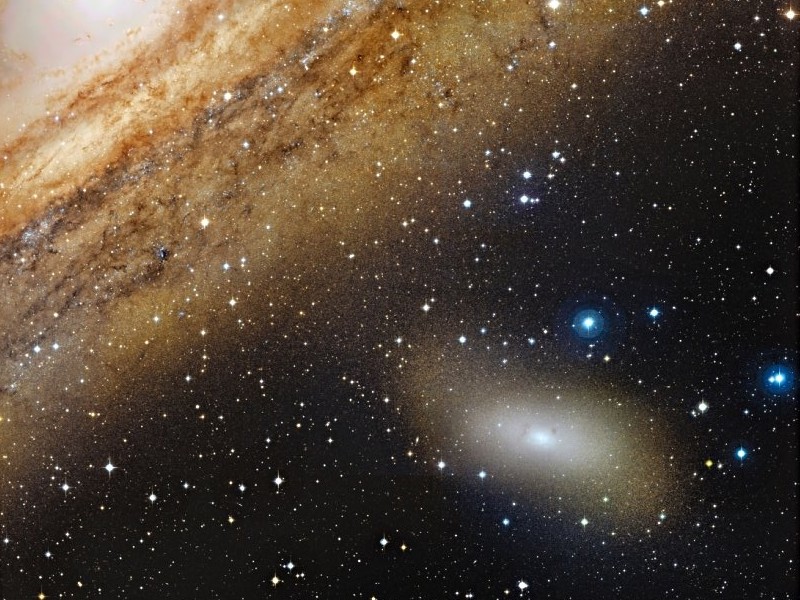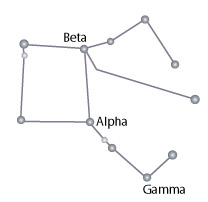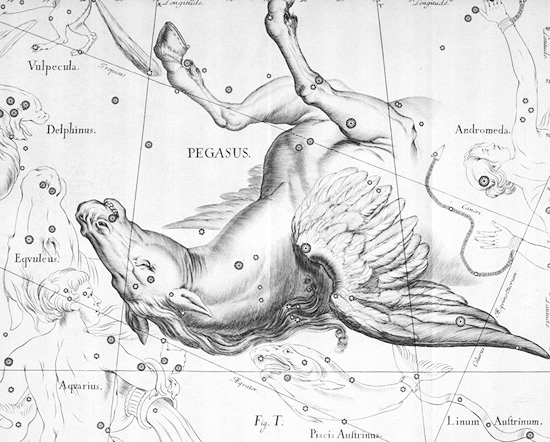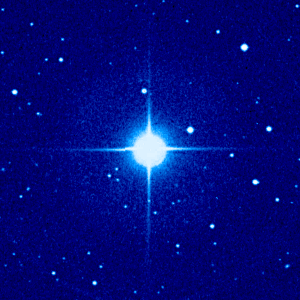Stellarium is a free open source planetarium for your computer. It shows a realistic sky in 3D, just like what you see with the naked eye, binoculars or a telescope. It is being used in planetarium projectors. Just set your coordinates and go.
http://www.stellarium.org/ You can use it to identify the sky in your neighborhood no matter where you live.
Highlights of the October Sky
Evening Planets:
Mars dips toward the southwestern horizon in the early evenings of October. It slips even closer to the horizon, and gets even harder to spot, later in the month.
Jupiter rises in the late evening to dominate the sky throughout the rest of the night. Use binoculars or a small telescope to admire the giant planet’s features.
Constellations and Deep-Sky Objects
Pegasus, the great winged horse of Greek mythology, prances across the autumn night sky. His body is denoted by a large area of stars known as the “Great Square.” Coordinates: Right Ascension: 22h Declination: +20º
Johannes Hevelius’ Pegasus fromUranographia(1690)
The story behind the name: Pegasus, the winged horse, was the son of Poseidon and Medusa. Medusa had been one of three beautiful sisters. Athena was angered that Medusa met with Poseidon in one of her temples. She changed Medusa into a terrible monster. Zeus kept Pegasus out of the world to placate Athena. Pegasus (and the warrior Chrysaor) sprang from Medusa’s body after she was killed by Perseus.
Pegasus had been living on Mount Helicon, tended by the Muses for whom he created a drinking well. Bellerophon, a young man accused of murder, fled his city and took refuge with Proteus, the king of Tiryns. Proteus suspected Bellerophon of trying to seduce his wife (not true) and sent him to his father-in-law, King Iobates, with a sealed note repeating the story.
Iobates decided to set Bellerophon so difficult a task that he would would not return alive. He asked him to destroy the Chimaera, a fire-breathing monster with a lion’s head, a goat’s body, and a serpent’s tail. Bellerophon consulted a seer who advised him to catch and tame Pegasus. Some versions of the story say that the gods helped him, but in any case, Bellerophon caught and tamed Pegasus. He overcame the Chimera by flying above her and shooting her with arrows, and then forcing a lump of lead down her throat which melted from her fiery breath and burned her insides.
Pegasus hosts 51-Pegasi, the first Sun-like star known to have an extra-solar planet. The brightest corner of the Great Square, Alpheratz, is also the brightest star in the constellation Andromeda. In Greek mythology, this princess was chained to a rock near the sea to appease a sea monster.
51 Pegasi: A New Planet Discovered in 1995
Are we alone in the universe? Do other
stars have
planets too? Humanity took one step closer to answering these questions in October 1995 when it was announced that the star
51 Pegasi harbors at least one planet. In the above picture of
51 Peg the planet is not visible – it can only be detected by noticing small changes in the star’s motion.
Claims of planets orbiting other stars are rare, with perhaps the most credible pertaining to a
neutron star - a star much different than the
Sun. But new ground was broken in 1995 when the planetary detection claimed around the normal Sun-like star 51 Peg was confirmed. The planet, discovered by Michel Mayor and Didier Queloz, is thought to be like
Jupiter - except orbiting so close to the parent star that it’s year lasts only about 4 days! In the above picture the lines centered on 51 Peg are caused by the telescope itself and are not related to the star or planet.
Within Andromeda’s boundaries, look for M31, the Andromeda Galaxy, an island of billions of stars. On a clear, dark night it appears as a faint smudge of light. Approximately 2.5 million light-years away, M31 is the closest spiral galaxy to our own Milky Way Galaxy and the most distant object you can see with your eyes alone. Binoculars and small telescopes reveal M31’s glowing nucleus and spiral arms.
Credit: NASA
A smaller companion galaxy, M110, appears as a faint spot near the large galaxy. The Andromeda Galaxy is slowly pulling in, and will eventually consume, another one of its small companion galaxies, M32.
M110: Satellite of the Andromeda Galaxy

Credit &
Copyright :
Jean-Charles Cuillandre (
CFHT ) &
Giovanni Anselmi (
Coelum Astronomia ),
Hawaiian Starlight
Our Milky Way Galaxy is not alone. It is part of a gathering of about 25 galaxies known as the Local Group . Members include the Great Andromeda Galaxy (M31), M32, M33, the Large Magellanic Cloud, the Small Magellanic Cloud, Dwingeloo 1, several small irregular galaxies , and many dwarf elliptical and dwarf spheroidal galaxies . Pictured on the lower right is one of the dwarf ellipticals : NGC 205 . Like M32 , NGC 205 is a companion to the large M31, and can sometimes be seen to the south of M31 ‘s center in photographs. The image shows NGC 205 to be unusual for an elliptical galaxy in that it contains at least two dust clouds (at 9 and 2 o’clock – they are visible but hard to spot) and signs of recent star formation. This galaxy is sometimes known as M110, although it was actually not part of Messier‘s original catalog.
Morning Planets
Before sunrise, look for Venus blazing brilliantly above the eastern horizon.

Image credit: NASA/JPL
Events
An interesting meteor shower peaks on the night of October 21st to 22nd. After midnight, look to the east, where the constellation Orion is rising. Every few minutes you may spy a tiny remnant of Halley’s Comet burning up high in the atmosphere. This is the Orionid meteor shower.
The night sky is always a celestial showcase. Explore its wonders from your own backyard.
Video Credits
Produced by the Space Telescope Science Institute, Office of Public Outreach
Starfield images created with Stellarium
Mythological constellation forms from Firmamentum Sobiescianum sive Uranographia by Johannes Hevelius, courtesy of the United States Naval Observatory
Mars image courtesy of Matt Wedel
Jupiter image courtesy of Todd Gross
Andromeda Galaxy (M31) image based on an image courtesy of Naoyuki Kurita
Venus image courtesy of Mario Weigand
Narrated by Nancy Calo
Music written by Jonn Serrie
Production: Lucy Albert, Greg Bacon, John Bintz, John Godfrey, and Vanessa
Thomas













Astronomy is interesting….
God’s Word describes the “bottomless pit” as the place where those who have proven unfit for His Kingdom are placed. “Cast into outer darkness where their weeping and gnashing of teeth will be.”
“Bottomless pit”….”Outer darkness”. These are aptly described by the evident reality of “black holes”….literally “knots” in the fabric of the universe, tied by the Hand of God Himself. These “knots” would effectively place those inside them, outside of God’s Kingdom. The following link contains a true account regarding some of my experiences:
http://rense.com/general54/babalc.htm
Just as foretold, some among mankind now have certain powers over the weather, taking dominion over the air, even going into space. Taken on the whole, their technological prowess seems intimidating to those remaining willfully ignorant of the Higher Realm!
Take a good hard look at the folly of empires throughout history….what student of history does NOT know that man has always ended up dominating his fellow man to his own injury time and time again? Look at the Wisdom contained in God’s Word. Evolutionists have long ridiculed God’s Word as inaccurate and full of myths. Let’s take one of the first ones. God caused Adam to sleep and took a rib and used it to make Eve. If it is a myth, then what a stroke of luck that those making up such fantasy, would choose the only bone in the human body that grows back every time it is carefully removed by human surgeons the world over for some time now. After creating all lower life forms on the planet, it was said: “Let us make a man in our own image”. Compare this with the time line of man in his infant dalliances with similar projects. One has only to perform a cursory net search to see the progression of man’s efforts at creating autonomous creatures. He started with the basest forms and progressed to the point of creating rudimentary AI beings in his own image. Such a progression that mimicks, if in an infantile way, that laid down in God’s Word eons ago….is not by chance, but was inevitable. Cowardly humans prefer not to answer to One higher than themselves and ignore the myriad Truths in God’s Word because they have grown to love the lie, and the father of it. I find it repugnant and rapaciously wrong that man should deny His Creator, yet pontificate his tragic level of hubris in all directions the moment he comes closer to imitating even the simplest of God’s Creations. Even at this time, the science halls are rife with triumphant cries here and there every time nano science produces even the simplest of nano electric motors. Such crude attempts which humbly wither in comparison to the vastly superior Flagellar Motor, whose amazing electric motors drive propellers by means of stators, rotors, magnets, bushings, universal joints etc. at RPMs as high as 1,800 per second. Man, by his own unanalyzed admission, is effectively admitting that he rejoices at being able to even crudely copy that which he deems to have been a blind, dumb, accident. Arrogantly, stupidly, proclaiming that the sum is infinitely less than it’s parts!
Fact is, any serious and honest student of history can see that God’s Word has foretold the story of man accurately to the letter, clearly delineating who would be who on the world stage at this late hour, and what their beliefs, ideals, and technological capabilities would be. Also proclaiming, again, accurate in every detail, what would be taking place in the heavens and to the earth at this time.
http://www.missiontoisrael.org/gods-covenant-people/tableofcontents.php
http://www.missiontoisrael.org/ishmael,edom,israel.php
http://www.bibliotecapleyades.net/ciencia/ciencia_earthchanges31.htm
http://www.divulgence.net/Sun%20angle.html
http://www.nbclosangeles.com/weather/stories/Downtown-Los-Angeles-Heat-Weather-103883779.html
http://axischange.wordpress.com/2007/08/09/earth%E2%80%99s-axis-has-changed-%E2%80%BA-create-new-post-%E2%80%94-wordpress/
http://www.isuma.tv/lo/en/inuit-knowledge-and-climate-change-project/earth-has-shifted
http://nsidc.org/arcticseaicenews/
http://www.nature.com/news/2010/100827/full/news.2010.437.html
http://www.isuma.tv/hi/en/inuit-knowledge-and-climate-change/tilted-earth-has-changed-everything
http://www.zetatalk.com/index/orbits.htm
http://nfo.edu/limits.jpg
http://i48.tinypic.com/10qbh9v.jpg
http://i50.tinypic.com/29krwar.jpg
http://www.wired.com/wiredscience/2009/07/hightides/
http://news.nationalgeographic.com/news/2007/11/071122-tremors-tides.html
http://www.zetatalk.com/index/earth243.htm
http://www.gpb.org/news/2009/07/27/scientists-dont-know-whats-causing-freak-tides
http://www.hindu.com/thehindu/holnus/000200907241023.htm
Google – monster waves cruise
http://www.biblebelievers.org.au/joebrandt.htm
Read Luke 21:25-28, Revelation 16:8, and get an idea of the progression of events that has taken place, just in the last few years, then read Isaiah 24:20…
“The earth reels like a drunkard, it sways like a hut in the wind; so heavy upon it is the guilt of its rebellion that it falls–never to rise again.”
Like it or not, believe it or not, Live it or not…..Love it or not….the Truth is the greatest currency man has been privleged to spend. And God’s Truth is never wasted for it never returns to Him without result.
Love, Truth, Courage. These three are One, for not one of them survives very long without the other. Our God is all Three, and so Much more.
Time is short indeed. Get to know your God….and if you feel far from Him, who do you think has moved?
http://www.kingdombiblestudies.org/2hands/2hands1.htm
Blessings in Yahshua, Jesus Christ
Astronomy is interesting and a beautiful stunning gift for the night sky viewers.
@tech really does this article that is to encourage people to look up need to become a debate field for yet more and more of ‘Gods Word”?